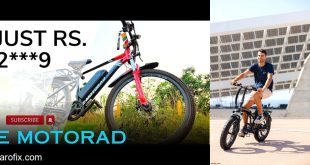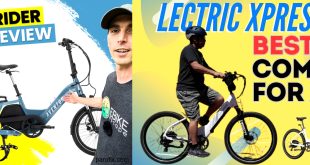Is a Custom Electric Beach Cruiser a Hit?
Imagine rolling along the coastline, the sun kissing your skin, waves crashing nearby, and your ride is not just a bike, but a custom electric beach cruiser built exactly for you. Sounds dreamy, right? But is it really a hit among riders, commuters, and casual beach-goers? Let’s dive into the details, explore technical specs, personal experiences, and why these machines are turning heads in the e-bike world.
Why Custom Electric Beach Cruisers Are Gaining Popularity
Beach cruisers have always had a relaxed, retro vibe—balloon tires, wide handlebars, and an upright seating position perfect for leisure rides. Adding an electric motor transforms them from fun vehicles into versatile, sustainable transport options. Here’s why custom versions are particularly catching attention:
- Personalized comfort: Frame geometry, saddle type, handlebar style, and pedal-assist settings can all be tailored.
- Optimized motor and battery: Choose power levels and battery size based on terrain and ride length.
- Unique aesthetics: Custom paint, decals, and accessories make your cruiser a statement on wheels.
- Sustainability: Reduces reliance on gas-powered vehicles for short trips or beach commutes.
From my own experience riding a matte turquoise cruiser along the Pacific Coast, I noticed two things immediately: fewer people huffing past me on electric scooters, and way more smiles from strangers impressed by the design. Comfort + style = instant popularity.
Technical Details That Make a Custom Electric Beach Cruiser Stand Out
If you’re serious about performance, here’s what to look for when considering a custom electric beach cruiser:
- Motor Type: Hub motors are common in cruisers, providing quiet, smooth rides. Mid-drive motors give better climbing and acceleration, which is useful for hilly coastal roads.
- Battery Capacity: Ranges from 400Wh to 1000Wh. Higher capacity allows 40–100 miles per charge depending on terrain and rider weight.
- Frame Material: Aluminum for lightweight durability, steel for classic strength and smoother rides, or even bamboo for eco-conscious builds.
- Tire Options: Wide balloon tires for soft sand and smooth pavement, fat tires for rougher or off-road trails.
- Brakes: Hydraulic disc brakes are ideal for safety and stopping power, especially on heavier custom builds.
- Accessories: Integrated lights, racks, fenders, phone mounts, and cup holders (yes, seriously, hydration matters on beach rides).
Pro tip: Opt for a removable battery. This makes charging easy if you don’t have an outlet near your boardwalk parking spot.
Personal Stories and Experiences
I once tried a custom electric cruiser with a 750W hub motor and oversized 4-inch tires along Venice Beach. Not only did it handle sand patches effortlessly, but I also got stopped multiple times by curious riders asking about specs. One notable story: a local café owner asked me to lead a “cruiser parade” along the promenade for a charity event. That ride alone convinced me that a custom electric cruiser is not just a vehicle—it’s an experience, a conversation starter, and a small community builder.
Another anecdote: I customized a cruiser with a step-through frame and a leather saddle, perfect for weekend errands. The upright seating made it easier on my back, and the pedal-assist allowed me to breeze past traffic without breaking a sweat. Comfort + efficiency = daily riding habit formed.
Practical Usage Tips
- Sand Navigation: Inflate your tires slightly lower for better grip on soft sand.
- Battery Management: Pre-charge before long beach rides. Salt air can accelerate corrosion, so rinse the bike after exposure.
- Storage: Use a waterproof cover or indoor storage to protect electronics from humidity.
- Routine Maintenance: Check tire pressure, brakes, and electrical connections weekly during heavy summer use.
- Riding Etiquette: Keep speed moderate near crowded boardwalks. Remember: style doesn’t excuse collisions.
Is a Custom Electric Beach Cruiser a Hit? Frequently Asked Questions
Q1: Can a beach cruiser handle long distances?
Yes! With a mid to high-capacity battery (500–1000Wh) and a quality motor (500–750W), these bikes can comfortably cover 30–60 miles on a single charge, depending on terrain and pedal-assist usage.
Q2: Are they suitable for hills?
Absolutely. While traditional beach cruisers struggle on inclines, electric versions with mid-drive motors or powerful hub motors climb gently and steadily. Tip: choose pedal-assist levels wisely to avoid draining the battery too fast.

Q3: How much does a custom electric beach cruiser cost?
Prices range from $1,500 for basic builds to $5,000+ for fully customized premium components. You pay for performance, style, and quality. Think of it as a beachside investment in fun and sustainability.
Q4: Are they eco-friendly?
Yes. Replacing car trips for short beach commutes drastically reduces carbon emissions. Combine with a solar-charging station at home, and you’re riding almost entirely carbon-neutral.
Q5: Can I really customize everything online?
Many brands and boutique builders offer detailed online configurators for frame style, color, motor, battery, tires, and accessories. DIY kits are also an option for full customization—but you’ll need some technical know-how.
Trends and Sustainability
Electric beach cruisers are at the intersection of leisure, transport, and green mobility. Cities are investing in bike lanes, and beach towns are embracing pedal-powered tourism. Future trends include:
- Smart tech integration: GPS, theft alerts, automatic pedal-assist adjustment.
- Eco-friendly materials: Aluminum recycling, bamboo frames, biodegradable seat foam.
- Modular designs: Easy battery swaps, interchangeable tires, and modular cargo racks for beach gear.
- Enhanced safety features: Automatic brake lights, reflective decals, and integrated horns for busy boardwalks.
From attending e-bike expos, I’ve seen prototypes with solar-assisted batteries and integrated smart displays, making them almost autonomous. Sustainability isn’t just a buzzword—it’s becoming standard for high-end custom cruisers.
Buying and Maintenance Tips
- Research the builder: Online reviews, forums, and YouTube demos reveal reliability and customer support.
- Test ride if possible: Even a short test helps you gauge comfort and handling.
- Regular tune-ups: Monthly checks of motor, battery, brakes, and tires keep performance optimal.
- Protect your investment: Use covers, store indoors, and avoid excessive exposure to saltwater.
- Upgrade wisely: Modular designs allow swapping batteries, motors, or tires as tech improves.
Conclusion
So, is a custom electric beach cruiser a hit? Absolutely. They blend retro charm, modern technology, and sustainable mobility. Riders get a unique experience that’s comfortable, stylish, and efficient. From personal anecdotes of seaside cruises to trends in urban mobility, it’s clear these cruisers are more than just a fad—they’re a lifestyle.
Highlighted Tip: Invest time in customization. Your ideal cruiser isn’t just about specs—it’s about comfort, style, and joy on every ride. The right build can turn daily errands, beach trips, or sunset rides into memorable adventures.
In short, custom electric beach cruisers are cruising their way into the hearts of riders everywhere. Fun, sustainable, and uniquely yours—they’re a definite hit, now and for the foreseeable future.
 Electric Bike & Bicycle Repair Hub Master DIY electric and traditional bike repairs with practical tips and trusted product recommendations.
Electric Bike & Bicycle Repair Hub Master DIY electric and traditional bike repairs with practical tips and trusted product recommendations.



